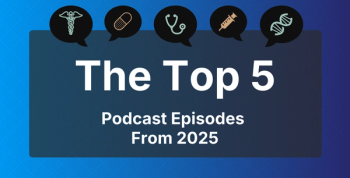
Balancing Cost, Coverage, and Clinical Value in First-Line Multiple Myeloma Care: Emilie Aschenbrenner, PharmD, BCOP
Emilie Aschenbrenner, PharmD, BCOP, discusses how integrating CD38-targeted therapies into first-line treatment for transplant-ineligible multiple myeloma requires balancing clinical benefit, cost, and insurance coverage.
At a recent
Despite the high upfront costs, Aschenbrenner and her physician colleagues agreed during the panel that these regimens can be cost-effective if they produce deep, durable remissions and measurable residual disease (MRD) negativity, ultimately reducing treatment frequency and overall monthly costs over time. She emphasized the role of pharmacists and medication access teams in navigating payer requirements, optimizing regimen selection, and ensuring patients receive therapies that maximize both clinical benefit and long-term value.
This is the first part in a series with Aschenbrenner.
This transcript was lightly edited; captions were auto-generated.
Transcript
In the first-line treatment of multiple myeloma, particularly for transplant-ineligible patients, how do cost considerations, insurance coverage, and financial toxicity affect access to and real-world use of CD38-targeted therapies when added to traditional chemotherapy regimens?
This is a question we discussed with the panel. We first discussed how these agents are certainly not new. They've been around for 8 or 9 years, even as FDA-approved agents. We had to ask some of these questions about what added benefit, added toxicity, and then added benefit even in a relapse/refractory setting when we move from doublet to triplet therapies. We know multiple myeloma is certainly considered still an incurable disease, and we want those deep and durable remissions and offer those effective therapies upfront. When these agents now move into the quadruplet setting, I can comment, as a clinical pharmacist working with my medication access team, that we routinely don't necessarily have trouble getting them approved by payers and insurance companies if they're used on label or in alignment with the national consensus guidelines.
I had a little bit of a conversation back and forth during the panel that Ravi Kishore Narra, MD, MS, a multiple myeloma specialist, and myself had a patient, for example, where we wanted to use a quadruplet regimen for transplant-ineligible patient, but the patient could not tolerate immunomodulatory therapy like [lenalidomide], so we tried to use a quadruplet combination that was not covered by the patient insurance, so we had to work around that.
We know all these therapies are pretty costly, but overall, from a value perspective, we all agreed, as panelists, myself being the pharmacist and then my physician colleagues, that if we can offer effective therapies now and translate that into more deep and durable remissions that led into our MRD negativity discussion, that that really could be very cost-effective and of value. We also noted that as these therapies are used in the transplant-ineligible population, they move from more frequent dosing to less frequent, like weekly to biweekly, then once a month, so that overall, with time, if we give these patients effective therapies, that cost per month will definitely decrease with time.
Newsletter
Stay ahead of policy, cost, and value—subscribe to AJMC for expert insights at the intersection of clinical care and health economics.







































